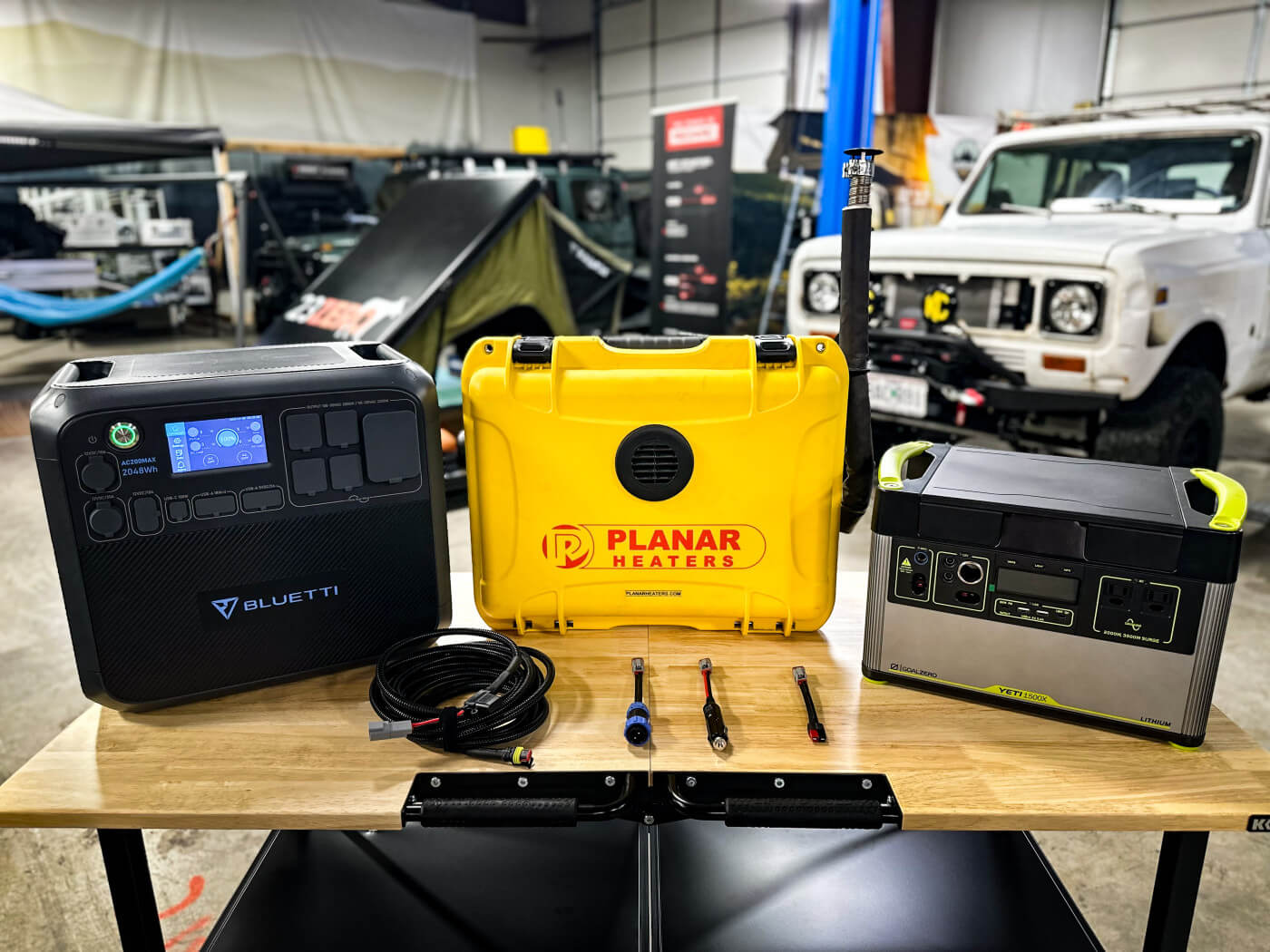We get this question almost daily here at Overland Addict during the winter camping season, and for good reason.
Like us, a lot of folks understand that cold-weather camping can actually be enjoyable and quite comfortable if you have the proper gear.
One piece of gear that can help tremendously when camping in the cold is some sort of heat source to keep you warm while you sleep.
I’ll save the pros and cons of different heat sources for another post, but suffice it to say that a diesel heater is one of the most efficient heat sources you can choose.
One of their efficiencies lies in the small amount of power they consume when they are running and up to temperature.
Power, you say? That’s right.
While the heat is produced through the combustion of diesel fuel, the glow plug and fan require electricity. To that end, a lot of campers opt to use a portable battery, also known as a power station or solar generator, to power their heater.
While the power requirements are quite minimal under normal operation, during the startup and shutdown cycles the heaters pull a significant amount of current for a short period of time.
Current is measured in Amperes, commonly abbreviated as Amps. For brevity’s sake, we will use this shortened form going forward.
It is the amperage, the measured value of amps, used in the startup and shutdown cycles that essentially defines whether or not a particular portable battery will adequately power a diesel heater.
While amperage can vary between heater brands and sizes, we’ve found 15 amps to be a good rule of thumb to use as a rating when choosing a power source for your diesel heater. It’s a bit more than what's required, but leaves a margin to ensure your heater will never shut down prematurely, which can be catastrophic and leave you with a worthless heap.
Now that we’ve figured out the required amperage rating for the heater, next we need to identify a port on the power station that will provide the necessary 12 volts DC and 15 amps.
Most people have a tendency to choose the cigarette-style port; it’s both familiar and readily-available on almost every portable battery.
This is almost always the wrong choice, however.
If we were to check the specs of the cigarette-style socket on the power station, we’d probably find a rating of 10 amps which is not enough to safely power the heater.
Notice I said safely.
There are examples in the wild of people “successfully” running their heater from the 10 amp cigarette socket, but in reality the power station is likely allowing a temporary surge over the rated 10 amps. Knowing how critical that cool-down cycle is to the heater, would you trust the 10 amp socket to support the higher-amperage load during that cycle and to not shut down prematurely, causing irreparable damage to your expensive heater? I sure wouldn’t.
The safer bet is to choose a 12 volt DC port on the power station that is rated for the appropriate amperage. This unfortunately knocks a lot of the smaller power stations out of the running because they typically don’t have a DC port rated over 10 amps.
There are a few larger power stations on the market at the time of this writing that aren’t egregiously large and still provide a 12 volt DC port capable of providing sufficient power.
The Goal Zero 1000 Core, 1000X and 1500X are three of the smallest of which I’m aware. Other reasonably-sized choices are the EcoFlow Delta Pro, Bluetti AC200MAX and AC200P, and the ZeroBreeze ElecHive. There are others that have the correct power-rated ports but they become pretty wieldy to take on trips.
All of the power station examples above provide Anderson Powerpole connections for their high-current DC ports with the exception of the Bluetti. The AC200MAX uses a connection called SP21 and the AC200P uses on called SA20. While these connections are a bit atypical, they are my favorite types because they are threaded which makes them impossible to accidentally unplug.
If you don't have access to a portable battery that provides the correct 12 DC amperage, you could alternatively use a device called an AC to DC Converter plugged into one of the AC ports of the power station. This device converts the 110 volts AC to 12 volts DC, which can then power your heater. Since all power stations include AC ports, this would allow you to use any size power station for your heater's power source, provided the battery has enough overall capacity. Again, you'd just need to make sure the converter supplies 15 amps.
One final thing worth mentioning is that there are alternatives to a portable battery you could consider, such as a dedicated dual battery system, your starter battery on the vehicle or a battery box from companies like National Luna or Kickass. With any of these options, you have plenty of current available to run the heater safely.
So there you have it! I hope this was helpful in your journey of finding the right power source for your diesel heater. Now you should be well-equipped to answer the question, “Will my portable battery power my diesel heater?”
Planar Portable Diesel Heater

$1,575.00
If you take the winter off from camping because it's too cold, then you definitely need one of these portable diesel heaters from Planar! Unlike propane heaters, which will cause a build up of condensation, this Planar heater produces a… read more
If you're interested in getting your own diesel heater that's extremely reliable, check out the Planar/Autoterm portable diesel heaters we sell, and the different power adapters and accessories that will allow you to connect the heater to a multitude of power sources.
 Skip to content
Skip to content



